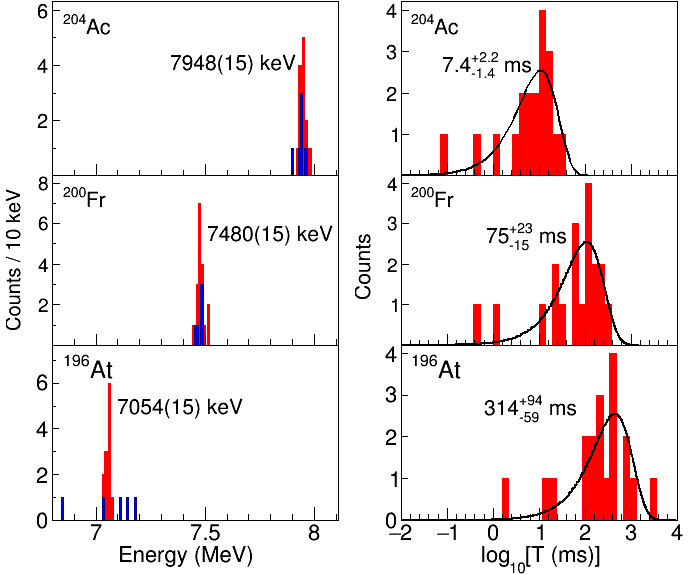Physicists Discover New Isotope Actinium-204

Figure 1. The gas-filled recoil separator SHANS2 (Spectrometerfor Heavy Atoms and Nuclear Structure-2). (Image from IMP)
A research team at the Institute of Modern Physics (IMP) of the Chinese Academy of Sciences (CAS), together with their collaborators, has recently synthesized a new isotope, actinium-204, which is the lightest actinium isotope so far discovered and the fourth actinium isotope beyond the proton-drip line. The study has been published in Physics Letters B on October 4.
Scientists performed the experiments at the Heavy Ion Research Facility in Lanzhou (HIRFL) and the China Accelerator Facility for superheavy Elements (CAFE2). The new isotope actinium-204 was produced in the fusion-evaporation reaction and identified via the recoil-α correlation at the gas-filled recoiled separators. This is the 35th nuclide synthesized at IMP.
Scientists then determined its α-particle energy and half-life to be 7948 keV and 7.4 ms, respectively. Both of them are consistent with the theoretical prediction.
For many isotopes, the odd-even staggering of half-life is strictly synchronized with that of α-particle energy. However, researchers found that this rule is not appropriate to actinium-204 as well as some other isotopes with less than 119 neutrons. This phenomenon reveals the blocking effect to α-decay process caused by the unpaired neutron in actinium-204. In other words, the unpaired neutron reduces the probability of forming an α cluster near the surface of the actinium-204 nucleus.
The study provided experimental data about mass and α-decay of the new isotope actinium-204, and contributed to our understanding of the role of unpaired nucleon in α-decay process.
This work was partially supported by the National Natural Science Foundation of China, the Guangdong Major Project of Basic and Applied Basic Research, the National Key R&D Program of China and the Strategic Priority Research Program of CAS, etc.

Figure 2. Stacked histograms of α-particle energy (left panel) and decay time distributions (right panel) for actinium-204 and descendant nuclei. (Image from Physics Letters B)
Contact :
LIU Fang
Institute of Modern Physics
Email: fangliu@impcas.ac.cn
Contact Information
Institute of Modern Physics
Email: fangliu@impcas.ac.cn



 甘公网安备 62010202000713号
甘公网安备 62010202000713号


